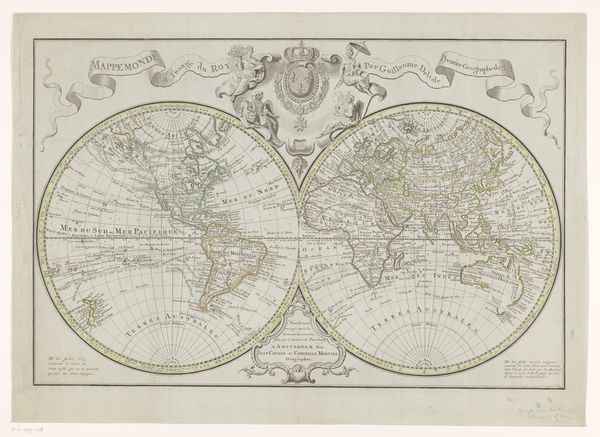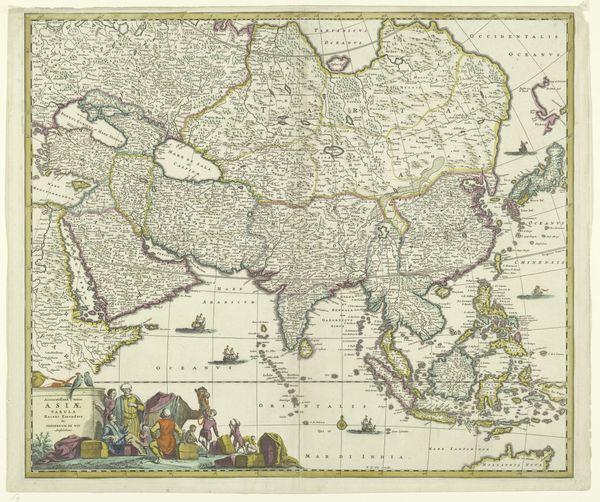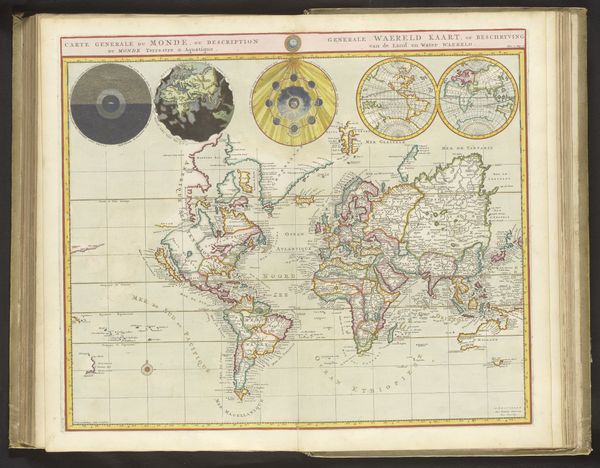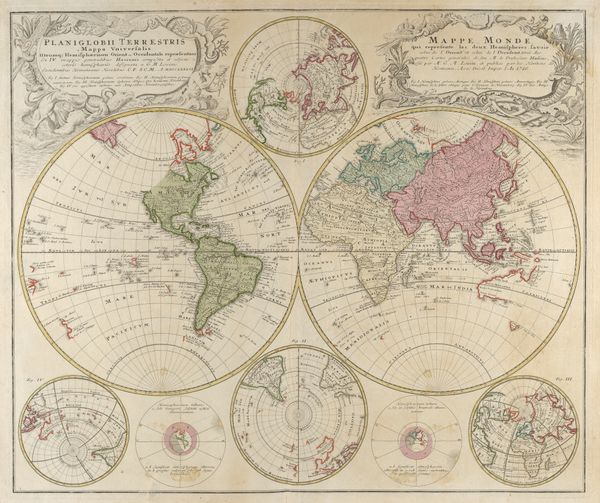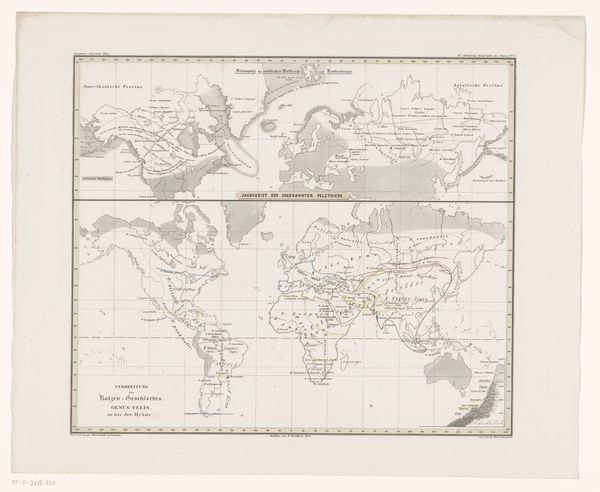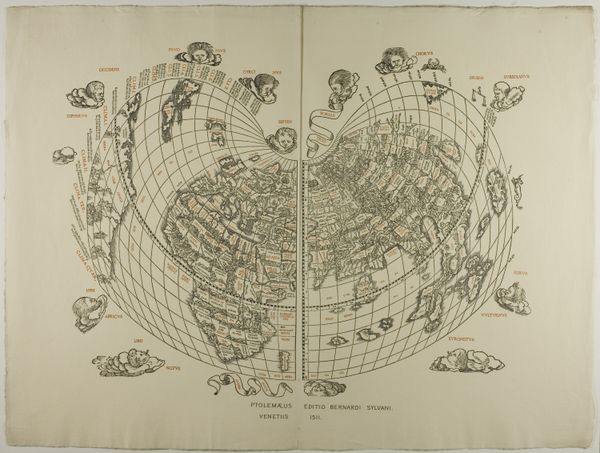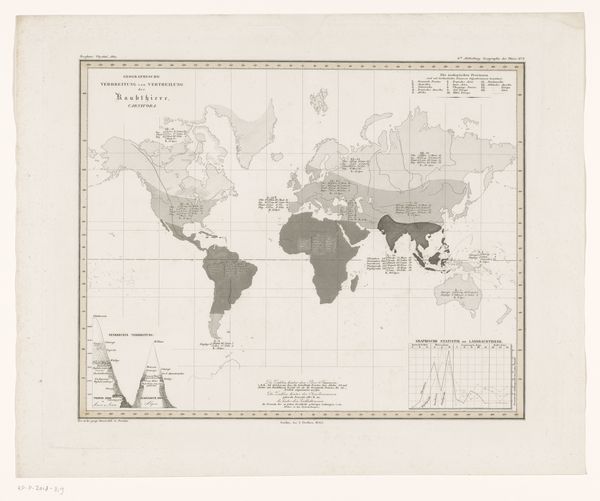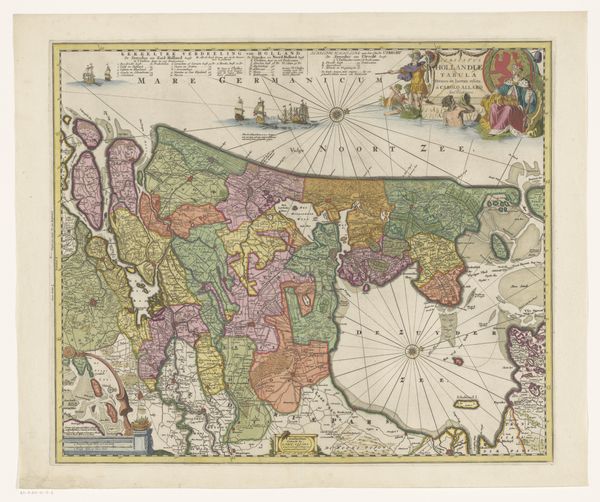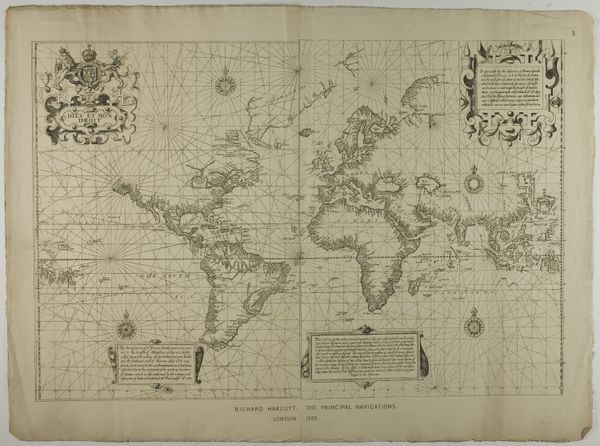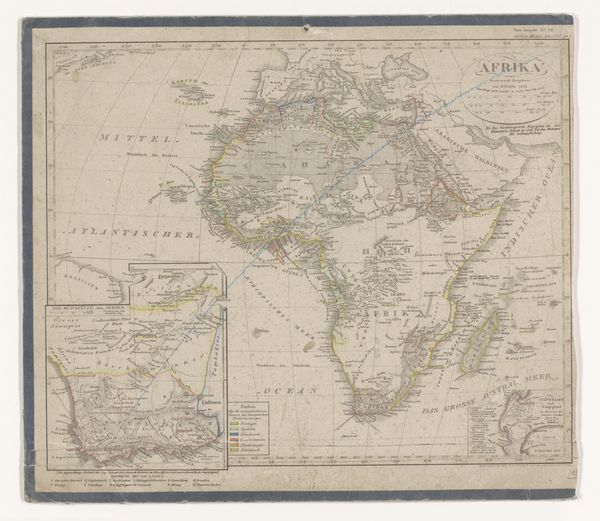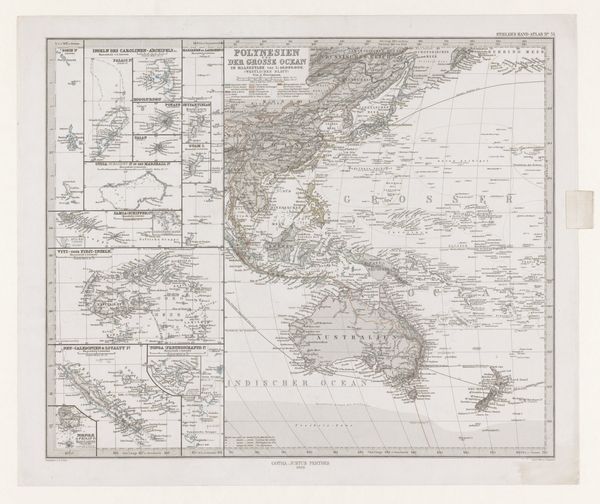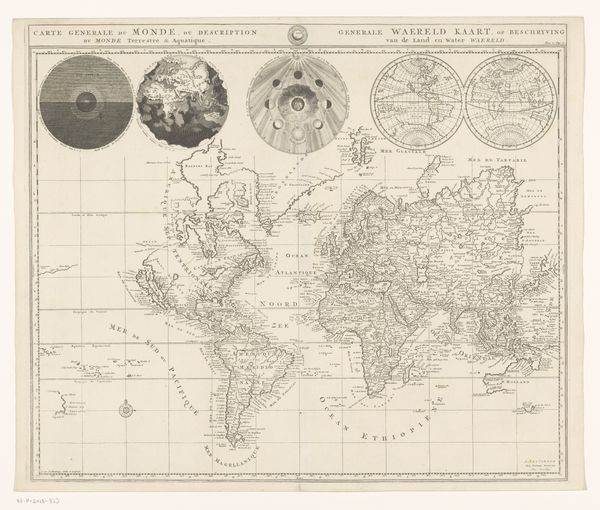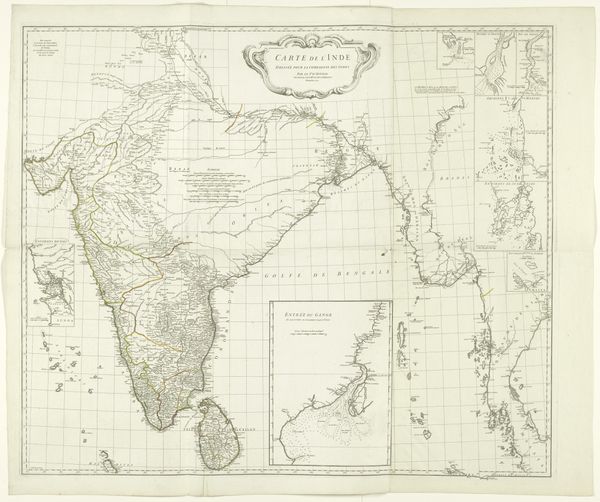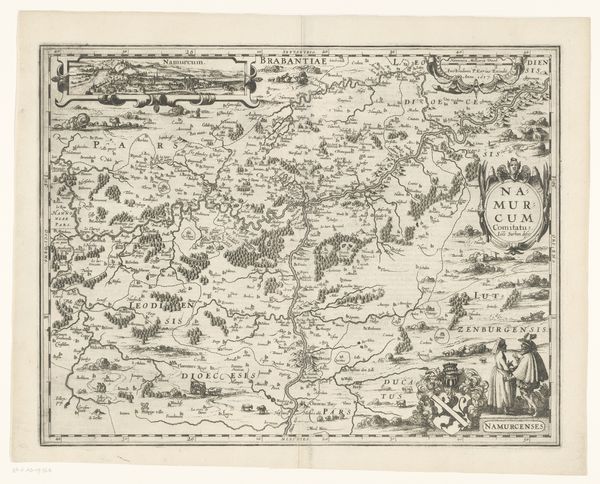
print, watercolor
#
narrative-art
# print
#
landscape
#
watercolor
#
linocut print
#
orientalism
#
watercolour illustration
#
watercolor
Dimensions: height 621 mm, width 820 mm
Copyright: Rijks Museum: Open Domain
Walter Crane created this world map in 1886 to illustrate the extent of the British Empire. It's a visual representation of a world order, colored in pink to proudly showcase British dominions. At the top, banners proclaim “Freedom,” “Fraternity,” and “Federation,” ideals starkly contrasted by the realities of colonial rule. The map is bordered by allegorical figures that represent the different regions, each drawn with stereotypes that reflect the era’s racial biases. Note how Britannia sits at the bottom, her shield emblazoned with the Union Jack, resting assuredly on the globe. Crane was associated with the Arts and Crafts movement, which often critiqued industrialization, yet here he lends his artistic skill to glorify imperial power. The map invites us to consider how art can serve ideology, and the emotional impact of such representations on both the colonizer and the colonized. What does it mean to promote ‘freedom’ while simultaneously subjugating entire populations? What stories does this map tell, and what does it omit?
Comments
No comments
Be the first to comment and join the conversation on the ultimate creative platform.
